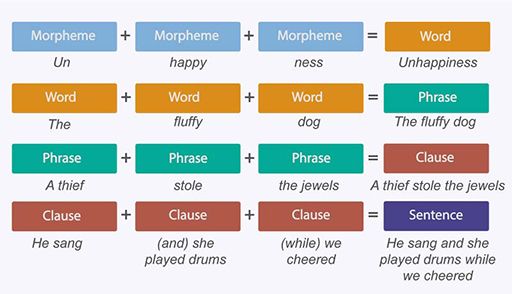1.1 How to build a language
In order to explain how different parts of language fit together we’re going to need some new vocabulary. You already know that morphemes can be combined to make words and that words can be combined to make phrases. In this week’s work you’ll also see that phrases can be combined to make clauses and clauses can be combined to make sentences. But even without knowing all of this technical terminology, you still have an underlying sense of how words fit together. Test your knowledge in the following activity.
Activity 1 Making the words make sense
Rearrange the words in these examples so that they make sense as a sentence.
1. all they pies the ate
2. want chance another we
3. sheriff the shot I
4. expected win to everyone them
5. quickly very reads Pedro
Discussion
- They ate all the pies
- We want another chance
- I shot the sheriff
- Everyone expected them to win
- Pedro reads very quickly
Hopefully you found it relatively simple to unscramble these sentences. That’s because you already have an underlying knowledge of English grammar. If you found this activity difficult, think about the exercise in terms of what patterns you can see in the way words can be arranged. For example, the first word in each sentence is the person/people doing (or thinking or feeling) whatever the sentence is about. If you felt that a particular word order was just ‘right’, even if you couldn’t exactly say why, that was your grammatical knowledge at work behind the scenes. Let’s bring that knowledge to centre stage.

